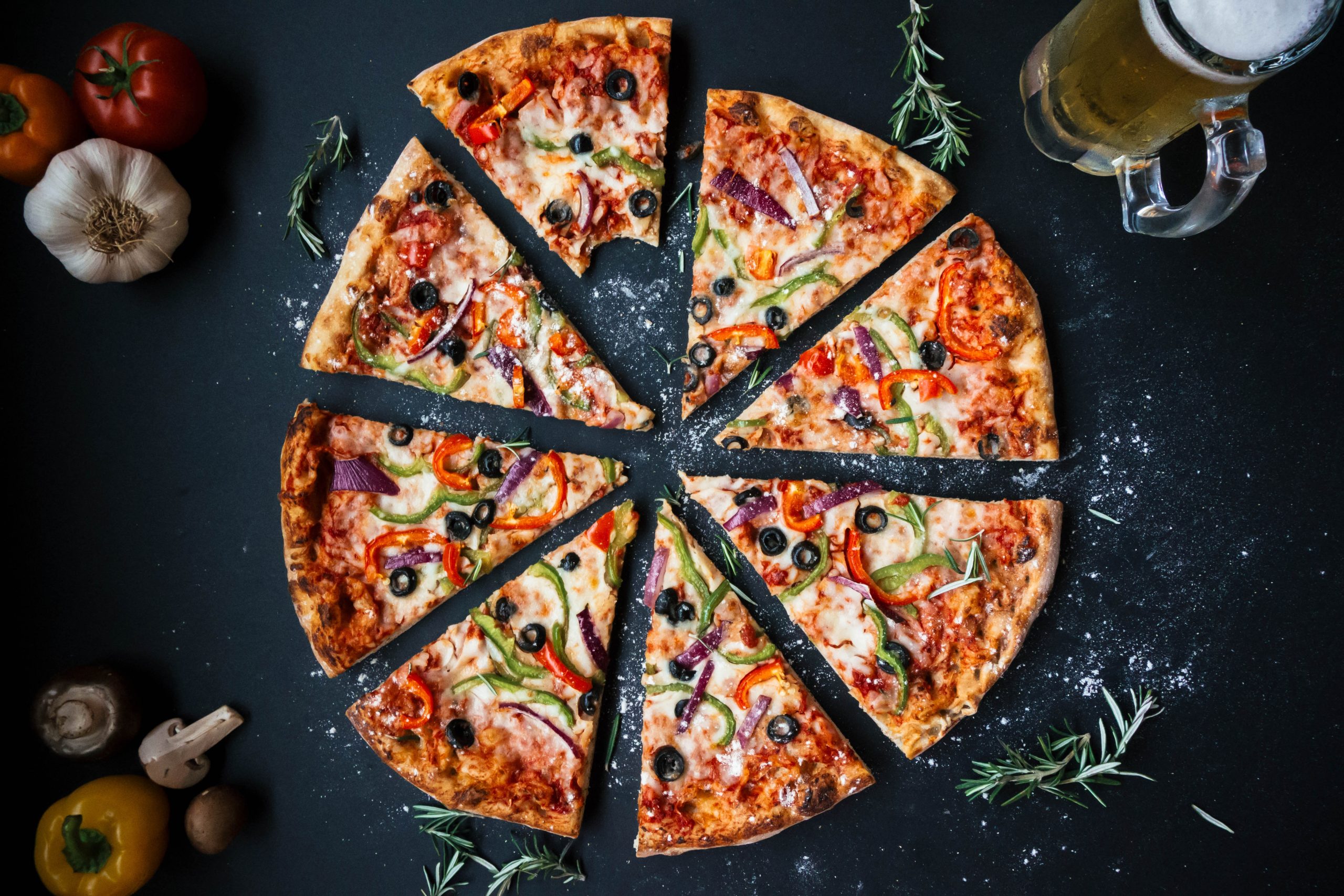Calories in Pizza
Pizza, a beloved and versatile dish, comes in various forms, each influencing its caloric content. From thin crusts to loaded toppings, the calorie count can vary significantly. In this detailed exploration, we’ll delve into the factors that contribute to the calorie content of pizza, providing a comprehensive guide for those seeking to make informed dietary choices.
Factors Influencing Pizza Calories:
- Crust Type:
The foundation of any pizza, the crust, plays a crucial role in determining its calorie content. Thin crust pizzas generally contain fewer calories compared to thick or stuffed crust variations. Let’s break down the average calorie content per slice based on crust type:Crust Type Calories per Slice (Approx.) Thin Crust 150-200 Regular Crust 200-250 Thick/Stuffed 250-350 - Toppings:
Toppings are a major contributor to the calorie count, with choices ranging from classic pepperoni to healthier options like vegetables. Here’s a breakdown of the average calories per slice for common toppings:Topping Calories per Slice (Approx.) Pepperoni 20-30 Sausage 30-40 Mushrooms 5-10 Bell Peppers 5-10 Olives (Black) 10-15 Spinach 5-10 - Cheese:
Cheese, a staple in most pizzas, significantly contributes to its calorie content. The type and amount of cheese used can vary, affecting the overall caloric intake. Here’s a rough estimate of calories from cheese per slice:Cheese Type Calories per Slice (Approx.) Mozzarella 40-60 Cheddar 50-70 Parmesan 20-30 - Sauce:
While tomato sauce is a common base, its impact on calorie content is relatively modest. However, creamy or Alfredo sauces can substantially increase the calorie count. On average, tomato sauce adds around 10-20 calories per slice.
Overall Calories in Pizza Estimates:
To provide a more comprehensive understanding, let’s consider a standard slice of pizza with common components:
- Thin crust (175 calories)
- Tomato sauce (15 calories)
- Mozzarella cheese (50 calories)
- Pepperoni (25 calories)
In this scenario, a single slice of pizza would total approximately 265 calories. However, it’s crucial to adjust these estimates based on specific toppings and crust types chosen.
Caloric in Pizzas Types:
To illustrate the calorie differences in popular pizzas, let’s examine two contrasting examples:
Margherita Pizza Calories (12-inch Thin Crust):
| Component | Calories per Slice (Approx.) |
|---|---|
| Thin crust | 150 |
| Tomato sauce | 10 |
| Fresh mozzarella | 50 |
| Basil (fresh) | 5 |
| Total | 215 |
Meat Lover’s Pizza Calories (14-inch Thick Crust):
| Component | Calories per Slice (Approx.) |
|---|---|
| Thick crust | 300 |
| Tomato sauce | 15 |
| Mozzarella cheese | 60 |
| Pepperoni | 30 |
| Sausage | 35 |
| Bacon | 20 |
| Total | 460 |
Types of Pizza:
Pizza, a global culinary icon, comes in diverse styles, each with its unique characteristics and flavors. Understanding the different types enriches our appreciation of this beloved dish.
- Neapolitan Pizza: Originating from Naples, Italy, Neapolitan pizza boasts a thin, soft, and chewy crust. Toppings are minimal, usually featuring tomato sauce, mozzarella, basil, and olive oil. This classic style exemplifies simplicity and quality ingredients.
- New York Style Pizza: Known for its large, foldable slices, New York-style pizza has a thin yet supportive crust. The slices are generously topped with tomato sauce and mozzarella. It’s a go-to choice for those seeking a delicious, on-the-go slice.
- Chicago Deep-Dish Pizza: In the Windy City, deep-dish pizza takes center stage. Characterized by its thick, buttery crust, it features layers of cheese, toppings, and chunky tomato sauce. This hearty pizza is a filling and indulgent delight.
- Sicilian Pizza: Hailing from Sicily, this rectangular pizza is known for its thick, focaccia-like crust. It’s typically topped with tomato sauce, a blend of cheeses, and various toppings. Sicilian pizza provides a satisfyingly dense and flavorful experience.
- California Pizza: Infused with creativity, California-style pizza often features unconventional toppings like avocado, arugula, and unique sauces. It embraces a thin, crispy crust, showcasing a fusion of culinary influences.
Pizza Statistics:
Pizza’s popularity extends beyond cultural borders, making it a ubiquitous and celebrated dish. Here are some intriguing statistics highlighting the global love for pizza:
- Consumption Rates:
- The United States holds the record for the highest pizza consumption, with an estimated 3 billion pizzas sold annually.
- On average, each American consumes approximately 46 slices of pizza per year.
- International Love:
- Pizza is a global phenomenon, with Italy, the United States, and Brazil consistently ranking as top consumers.
- In Japan, unique toppings such as squid and mayo are popular, showcasing the adaptability of pizza to local tastes.
- Pizza Chains:
- Domino’s and Pizza Hut are among the largest pizza chains worldwide, serving millions of pizzas daily across numerous countries.
- The global pizza market is valued in the tens of billions of dollars, underscoring its economic significance.
Calories in Pizza – A Recap:
Understanding the diverse types of pizza and acknowledging its global popularity adds depth to our appreciation of this culinary delight. While enjoying the various styles, it’s essential to be mindful of the calories in pizza, recognizing the impact of crust types, toppings, and cheese choices on nutritional content. By making informed decisions, individuals can savor their favorite pizzas while maintaining a balanced and satisfying diet. The above information will help in understanding the calories in pizza.
Conclusion on Pizza Calories
Understanding the calorie content of pizza involves considering multiple factors, including crust type, toppings, cheese, and sauce. By examining the nutritional breakdown and making informed choices, individuals can enjoy pizza while being mindful of their dietary goals. Always refer to specific nutritional information provided by pizzerias or packaged products for accurate details, and remember that moderation is key to maintaining a balanced diet.



